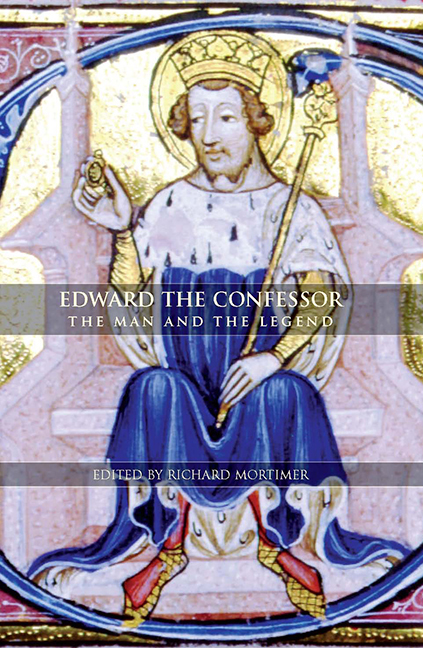Book contents
- Frontmatter
- Contents
- List of illustrations
- List of maps
- Preface
- Abbreviations
- Genealogical table
- 1 Edward the Confessor: the Man and the Legend
- 2 Edward the Ætheling (c. 1005–16)
- 3 Edward and Normandy
- 4 Edward the Confessor and the Succession Question
- 5 Edith, Edward's Wife and Queen
- 6 Edward the Confessor's Westminster Abbey
- 7 New Glimpses of Edward the Confessor's Abbey at Westminster
- 8 Craftsmen and Administrators in the Building of the Confessor's Abbey
- 9 The Sanctity and Canonisation of Edward the Confessor
- Bibliography
- Index
3 - Edward and Normandy
Published online by Cambridge University Press: 25 October 2017
- Frontmatter
- Contents
- List of illustrations
- List of maps
- Preface
- Abbreviations
- Genealogical table
- 1 Edward the Confessor: the Man and the Legend
- 2 Edward the Ætheling (c. 1005–16)
- 3 Edward and Normandy
- 4 Edward the Confessor and the Succession Question
- 5 Edith, Edward's Wife and Queen
- 6 Edward the Confessor's Westminster Abbey
- 7 New Glimpses of Edward the Confessor's Abbey at Westminster
- 8 Craftsmen and Administrators in the Building of the Confessor's Abbey
- 9 The Sanctity and Canonisation of Edward the Confessor
- Bibliography
- Index
Summary
LITTLE IS KNOWN about Edward's long exile in Normandy between the years 1016 and 1040. We might think we know all there can be known about this obscure period in his life. Yet it is worth surveying the scant evidence again in the light of recent research, in particular: the analysis of the four Norman charters featuring Edward in this period, the recent book on the formation of early Normandy, the study of Norman abbots and that on eleventhcentury English queens. Three points will be made. First I will draw attention to the importance of Godgifu (d. c. 1056), Edward's sister, who married Drogo, count of the Vexin (1017–35) and then Eustace II, count of Boulogne (1047– c. 1088). Second, I will highlight the role of some Norman abbots in supporting Edward's candidacy for the English crown. Finally, I will argue that Edward's alleged healing powers in Normandy, as recorded by his anonymous biographer, was part of the same campaign to give extra credibility to his royal claim.
Godgifu
ANY CONSIDERATION of the role Edward's sister Godgifu played must start with the realisation that the contemporary chroniclers are silent on the woman herself. There is no trace of her in the work of the eleventhcentury Norman historians William of Jumieges, William of Poitiers and the anonymous monk of Saint-Wandrille, author of the Inventio et Miracula sancti Vulfranni, nor in that of the Flemish biographers responsible in England for the Encomium Emmae and the Life of Edward, nor in the Anglo- Saxon Chronicle. She only emerges briefly from contemporary charters, which I will discuss later. We know about her primarily from two twelfth-century historians, William of Malmesbury and Orderic Vitalis, who tell us her name God(iou)a, Godgifu, and her marriages, first to Count Drogo of the Vexin, and after his death in 1035, probably in 1036, to Count Eustace II of Boulogne. They do so in the context of her husbands and her second son Ralph, earl of Hereford (d. 1057) whose title underlines his career in England as a member of Edward's following.
- Type
- Chapter
- Information
- Edward the ConfessorThe Man and the Legend, pp. 63 - 76Publisher: Boydell & BrewerPrint publication year: 2009

